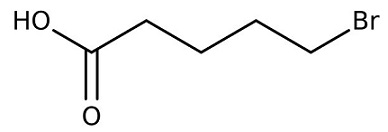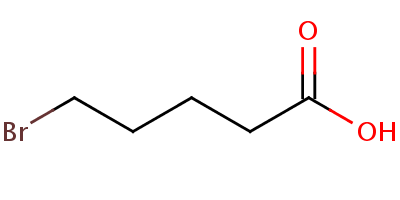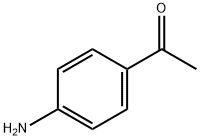4-Aminoacetophenone: Uses in synthesizing organic compounds
Oct 16,2019
4-aminoacetophenone is a yellow or brown solid that is soluble in the organic solvent ethyl acetate and also soluble in 1M HCl, but not in 1M NaOH. 4-Aminoacetophenone can be analyzed by the reverse phase (RP) HPLC method with simple conditions. The mobile phase contains an acetonitrile (MeCN), water, and phosphoric acid. For Mass-Spec (MS) compatible applications the phosphoric acid needs to be replaced with formic acid.
In organic synthesis and medicinal chemistry, the introduction of chlorine into an aromatic ring is a commonly used reaction. There were a variety of approaches reported for carrying out chlorination in the chemical industry.
However, there are few methods amenable to the large-scale production of pharmaceutical intermediates in pilot plants, which usually do not have any special equipment. 4-aminoacetophenone was tried to directly react with chlorine gas, whereas it gave mixtures of several byproducts without desired monochlorinated products. Further investigations involved treating chlorine gas with iodobenzene to give iodobenzene dichloride, which followed by reaction with 4-aminoacetophenone. This approach was highly effective for selective aromatic monochlorination. Chlorination of anilines by iodobenzene dichloride was also reported by Murakami, which has proven to be applicable for several valuable reactions in pharmaceutical chemistry. But it has failed to achieve wide use in organic synthesis mainly because of lack of stability. To develop a method for synthesizing iodobenzene dichloride and evaluate the possibility of safely applying to a large scale by using exploratory chemistry prior to running reactions on the pilot plant scale. A practical and scaled up monochlorination of 4-aminoacetophenone using iodobenzene dichloride was described. The results indicated the decomposition profile of this agent and called for further investigations. The defining safety data came from ARC studies and the fact that it was possible to drive the chlorination reaction under cooled conditions. These detailed safety evaluation approaches to hazards are useful when evaluating an unstable reagent for a process. The final process was successfully scaled up to afford 24.8 kg in 87% yield of 94% purity.
Thousands of synthetic dyes are obtainable in the market. Azo dyes constitute one of the largest and most varied groups of synthetic organic dyes in use today. Azo dyes attain the widest range of application by having easily tunable structure and simple application procedure due to synthetic dyes toxicity and carcinogenicity studies. The importance of azo dyes is due to its economy, versatility, relative ease of production and good dying performance, and sequential anaerobic–aerobic treatment of azo dyes. Furthermore, azo dyes have been investigated widely due to their excellent thermal and optical features with interesting applications in optical recording medium, toner, ink-jet printing, and oil-soluble light fast dyes. In fact, about half of the dyes in industrial application today are azo dyes, which are mostly prepared from diazonium salts. Some azo dyes have been found to have antimicrobial properties due to the presence of active functional groups, this biological activity of some azo dyes has increased their usage in textile, foods, and pharmaceutical industries. They have this vital ability to inhibit microorganisms which cause degradation of textile materials, degradation of food materials, skin diseases produced from bacteria which live inside clothing and textile fabrics and other ailments that affect human health. Azo dyes derived from 4-Aminoacetophenone was synthesized and explored for inhibition activities against S. aureus, Pseudomonas and E. coli. In addition to their dyeing process, the dyeing compounds showed fair to good fastness to washing and noticeable smoothness after washing.
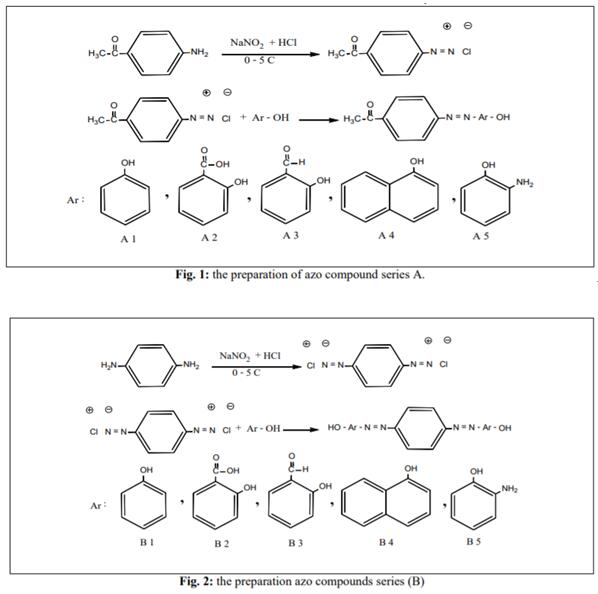
4-aminoacetophenone can be used in synthesizing other organic compounds. As reported, the azo compounds with various substituents were synthesized by simple diazotization reaction of 4-aminoacetophenone followed by coupling reaction with active methylene compounds. New organic compounds were synthesized with 4-Aminoacetophenone and biological potency was explored. For example, aryldiazenyl derivatives were carried out by coupling of diazonium salt of 4-aminoacetophenone and miscellaneous active methylene compounds such as: acetylacetone, ethyl cyanoacetate, dimedone or methyl acetoacetate. Moreover substituted 1,2,3-triazole were synthesized by the cyclization of 1-(4-azidophenyl) ethanone. The structures of the prepared compounds were promoted by IR, H1NMR and UV/Visible spectra. Furthermore, the synthesized compounds were examined in vetro for antibacterial activity against five strains of bacteria, including Staphylococcus aureus, Bacillus subtilis, Pseudomonas aeruginosa, Escherichia coli and Acinetobacter by the agar diffusion method.
Besides, 4-aminoacetophenone was used to synthesize aryl semicarbazone which was tested for anti-HIV activity and studies give an indication that further manipulation of this series may yield more potent compounds. 4-aminoacetophenone was also used to develop a simple and sensitive spectrophotometric method for the trace determination of 1-naphthylamine in aqueous solution, based on azo dye formation after coupling with diazotised 4-aminoacetophenone. In addition, researchers also studied the influence of the Pd content in the Pd/TiO2 catalysts by the photocatalytic reduction of 4-nitroacetophenone to 4-aminoacetophenone.
References
Hasan, F., 2018. Synthesis and characteriztion of some novel diazotized compounds composed of bis-iminamine moiety and evaluation of their antibacterial property.
Zanka, A., Takeuchi, H. and Kubota, A., 1998. Large-scale preparation of iodobenzene dichloride and efficient monochlorination of 4-aminoacetophenone. Organic Process Research & Development, 2(4), pp.270-273.
Al-Obaidi, N.S., Sattar, O.D.A., Hadi, F.F., Ali, A.S. and Zaki, B.T., 2018. Synthesis and Characterization of Some Azo Dyes Derived from 4-Aminoacetophenone, 1, 4 Phenylene Diamine and Studying its Dyeing Performance and Antibacterial Activity. Journal of Biochemical Technology, 9(4), p.33
- Related articles
- Related Qustion
- p-Aminoacetophenone: Properties, Applications, and Safe Handling in the Chemical Industry Dec 26, 2024
P-aminoacetophenone, also known as 4-aminoacetophenone, is a chemical compound of significant importance in both academic research and industrial applications.
- 4-Aminoacetophenone: properties and applications in versatile fields Aug 3, 2023
4-Aminoacetophenone is a white to pale yellow crystalline solid. Its applications include synthesis of anti-inflammatory agents, tyrosinase activators/inhibitors, and detection of nitrite in food.
5-Bromopentanoic acid (5-BPA) has found applications in organic synthesis, particularly in the construction of the α-chain of the F2α series of prostaglandins.....
Oct 16,2019Drug Intermediate3-Hepten-2-one is a colorless oily liquid with a powerful green-grassy, pungent odor. It is insoluble in water, but soluble in alcohol and oils.....
Oct 16,2019Analytical Chemistry4-Aminoacetophenone
99-92-3You may like
4-Aminoacetophenone manufacturers
- 4'-Aminoacetophenone
-
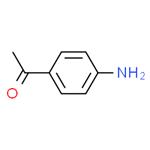
- $60.00 / 25g
- 2025-12-19
- CAS:99-92-3
- Min. Order: 25g
- Purity: 0.99
- Supply Ability: 100kg
- 4-Aminoacetophenone
-

- $0.00 / 1Kg/Bag
- 2025-12-19
- CAS:99-92-3
- Min. Order: 1KG
- Purity: 99%min
- Supply Ability: 1000KGS
- 4-Aminoacetophenone
-
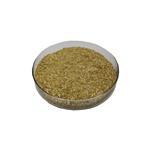
- $10.00 / 1ASSAYS
- 2025-12-19
- CAS:99-92-3
- Min. Order: 1ASSAYS
- Purity: 99%
- Supply Ability: 10 ton




